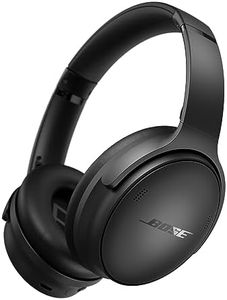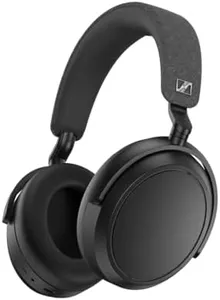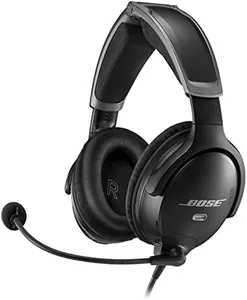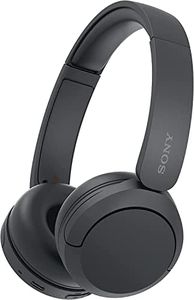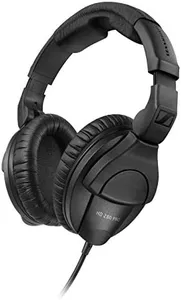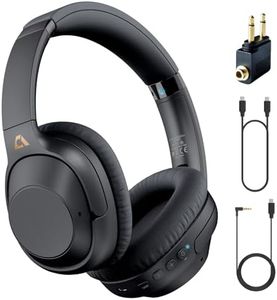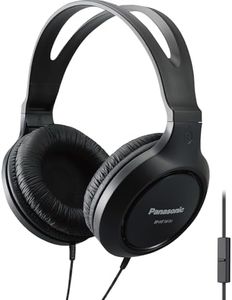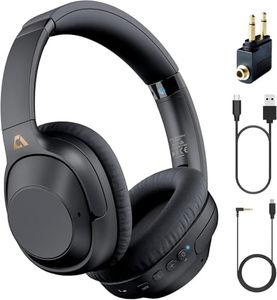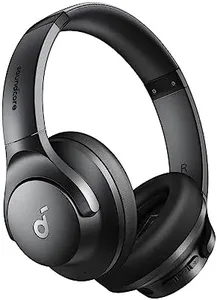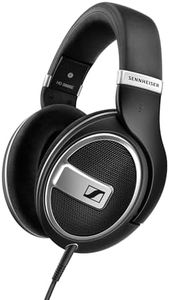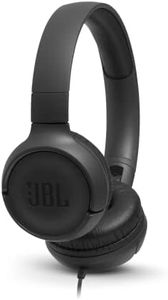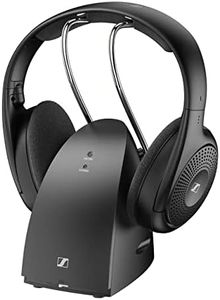We Use CookiesWe use cookies to enhance the security, performance,
functionality and for analytical and promotional activities. By continuing to browse this site you
are agreeing to our privacy policy
10 Best Airplane Headphones
From leading brands and best sellers available on the web.Buying Guide for the Best Airplane Headphones
Choosing the right headphones for airplane travel can make your journey much more comfortable and enjoyable. The best headphones for flying should reduce background noise so you can relax or focus, be comfortable over long periods, and be easy to use with airplane systems or your own devices. Understanding the features that matter most will help you find headphones that suit your travel habits and preferences.Noise CancellationNoise cancellation is a technology that reduces unwanted ambient sounds like the engine or cabin noise on a plane. This feature is important because it helps you hear your music, movies, or podcasts clearly and can also create a more peaceful environment for rest. Noise cancellation comes in two forms: passive (relying on design and quality ear pads to physically block noise) and active (using electronic systems to cancel out sounds). For airplane use, active noise cancellation is generally most effective, especially for long flights or if you value peace and quiet.
Comfort and FitComfort and fit refer to how the headphones feel when worn, especially for extended periods. This is vital on flights, as you may be wearing them for hours. Over-ear headphones with padded ear cups tend to be the most comfortable for longer use, but they can be bulky. On-ear and in-ear headphones are more compact, which matters if you want to save space or move around easily, but may not be as comfortable for prolonged wear. Think about your sensitivity to pressure, ear size, and whether you often nap on flights.
Battery LifeBattery life indicates how long wireless or noise-canceling headphones can operate before needing to be recharged. Since flights can be many hours, headphones with longer battery life mean less worry about losing your sound before you land. Look for models promising at least 15-20 hours if you travel long distances. If you usually take short flights, or you're okay with plugging in to recharge between uses, shorter battery life might be acceptable for you.
Portability and FoldabilityPortability and foldability describe how easy it is to pack and carry your headphones. Bulky headphones may offer great sound, but if you travel light or don’t want to fill your carry-on, look for foldable models or those that come with a travel case. In-ear headphones are the most compact and are easy to slip into a pocket or small pouch, making them a great choice if you value space-saving.
Wired vs. WirelessWired headphones use a physical cable and can often be plugged directly into airplane entertainment systems, while wireless headphones connect to your device with Bluetooth. Wired connections can be more reliable for airplane movies or music, but wireless headphones offer more freedom of movement and may be more comfortable without cables in the way. Also, some wireless options offer a detachable cable for flexibility. Decide based on whether you mostly use in-flight entertainment or your own devices.
Airplane Adapter CompatibilitySome airplanes have double-prong audio jacks rather than the standard single-prong. An airplane adapter allows your headphones to connect easily to these systems. If you want to use the plane’s built-in entertainment, make sure your headphones come with (or support) an airplane adapter. If you use only your own phone or tablet during flights, this may not matter as much.
